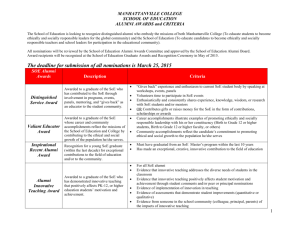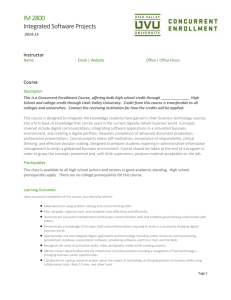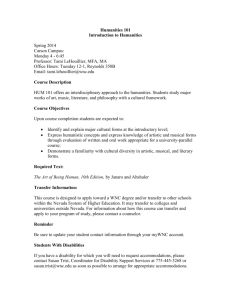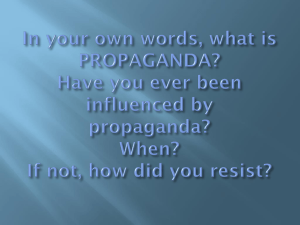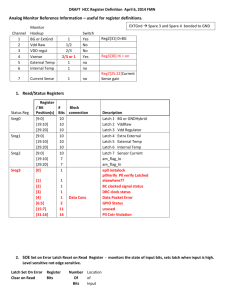POLS 2200 Intro Comparative Politics
advertisement
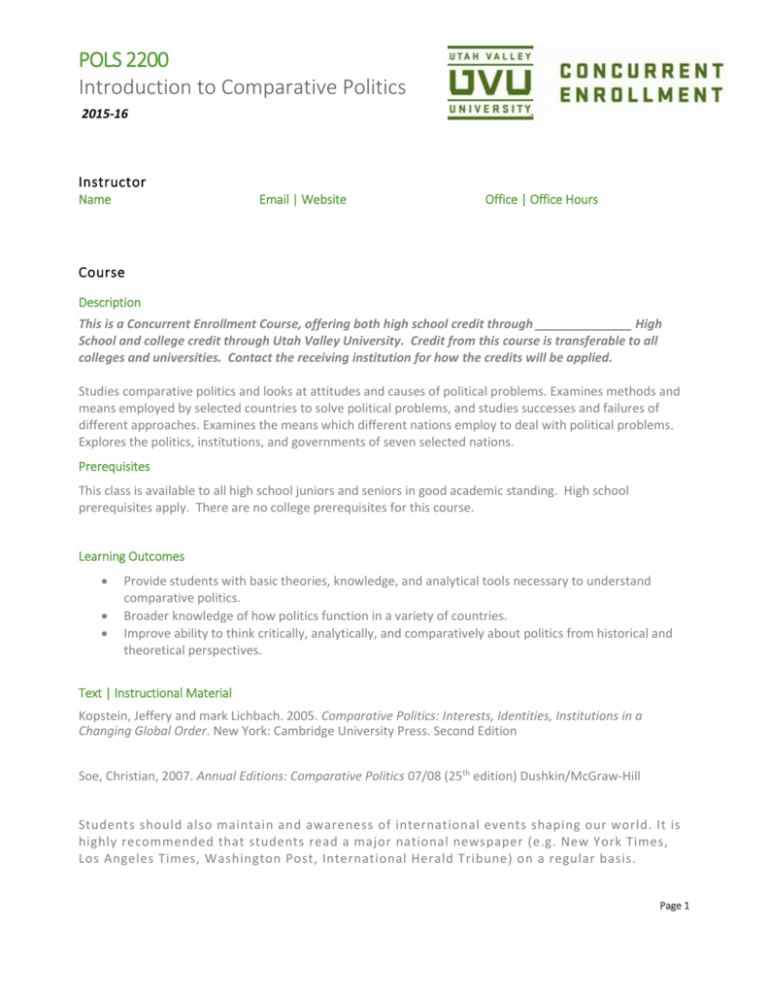
POLS 2200 Introduction to Comparative Politics 2015-16 Instructor Name Email | Website Office | Office Hours Course Description This is a Concurrent Enrollment Course, offering both high school credit through ______________ High School and college credit through Utah Valley University. Credit from this course is transferable to all colleges and universities. Contact the receiving institution for how the credits will be applied. Studies comparative politics and looks at attitudes and causes of political problems. Examines methods and means employed by selected countries to solve political problems, and studies successes and failures of different approaches. Examines the means which different nations employ to deal with political problems. Explores the politics, institutions, and governments of seven selected nations. Prerequisites This class is available to all high school juniors and seniors in good academic standing. High school prerequisites apply. There are no college prerequisites for this course. Learning Outcomes Provide students with basic theories, knowledge, and analytical tools necessary to understand comparative politics. Broader knowledge of how politics function in a variety of countries. Improve ability to think critically, analytically, and comparatively about politics from historical and theoretical perspectives. Text | Instructional Material Kopstein, Jeffery and mark Lichbach. 2005. Comparative Politics: Interests, Identities, Institutions in a Changing Global Order. New York: Cambridge University Press. Second Edition Soe, Christian, 2007. Annual Editions: Comparative Politics 07/08 (25th edition) Dushkin/McGraw-Hill Students should also maintain and awareness of international events shaping our world. It is highly recommended that students read a major national newspaper (e.g. New York Times, Los Angeles Times, Washington Post, International Herald Tribune) on a regular basis. Page 1 Course Topics Topic 1: What is Comparative Politics? K&L Chap 1 (pp.1-15) Topic 2: The State and its institutions K&L, Chap 2 (pp. 16-38 Soe, Articles 1 and 16-19 Topic 3: The State and its citizens Soe, articles 11-15 Topic 4: American Politics in Comparative Perspective Soe, articles 20-22 Topic 5: Early Developer: Great Britain K&L, Chap 3 (pp. 39-79) Soe, articles 2-4 Exam I Topic 6: Early Developer: France K&L, Chap 4 (pp,81-122) Soe, articles 5-6 Topic 7: Middle Developer: Germany K&L Chap 5 (pp.131-167) Soe, articles 7-8 Topic 8: Middle Developer: Japan K&L, Chap5 (pp.169-195) Soe, articles 9-10 Topic 9: Late Developer: Russia K&L, Chap. 7 (pp.205-250) Soe, articles 27-29 Exam II Topic 10: late Developer: China K&L, Chap 8 (pp. 253-290) Soe , articles 33-34 Topic 11: Experimental Developer: Mexico K&L Chap 9 (pp. 343-386) Soe, articles 30-31 Topic 12: Experimental Developer: India K&L, Chap 10 Soe, article 35 Topic 13: Experimental Developer: Iran and the Muslim World K&L, Chap 11 (pp. 395-425) Soe article 36 Topic 14: Experimental Developer: South Africa K&L, Chap 12 (pp 433-462) Exam III Assessments Participation: Class participation will count as 10% of the student’s final grade. The most important part of the participation grade is, of course, attendance. However, attendance alone is not sufficient for a student to receive a high mark for participation. Students should also be prepared to discuss the class readings, as well as come to class with comments and questions regarding the material. Excessive absences may result in a diminished course grade. Paper: Students are expected to write a short paper (5-6 pages) For the assignment, students will pick any country they like that is not studied in the course. The assignment calls on you to compare your country to the Untied States. Some questions you should answer in your essay follow: How does the political regime differ from that of the United States? How do the countries compare historically? What are the fundamental differences between your country and the U.S? Some issues you may want to cover include the role of citizens and interest groups, voting and elections and public policies. 2 Department Grading Scale A = 100-93 A - = 92-90 B+ = 89-87 B = 86-83 B - = 82-80 C+ = 79-77 C = 76-73 C - = 72-70 D+ = 69-67 D = 66-63 D - = 62-60 F = 59-0 Grading: Exam I 25% Exam II 25% Exam III 25% Class Participation 10% Paper Assignment 15% No Extra Credit Grades and Credit You will receive the same grade for your high school course as you receive for your college course. Your grade for this class will become part of your permanent college transcript and will affect your GPA. A low grade in this course can affect college acceptance and scholarship eligibility. University Academic Integrity Utah Valley University expects all students to maintain integrity and high standards of individual honesty in academic work, to obey the law, and to show respect for others. Students of this class are expected to support an environment of academic integrity, have the right to such an environment, and should avoid all aspects of academic dishonesty. Examples of academic dishonesty include plagiarizing, faking of data, sharing information during an exam, discussing an exam with another student who has not taken the exam, consulting reference material during an exam, submitting a written assignment which was authored by someone other than you, and/or cheating in any form. Violators of this policy will be subject to disciplinary action. Cheating will not be tolerated. It will result in a FAILING grade for the course. In keeping with UVU policy, evidence of academic dishonesty may result in a failing grade in the course and disciplinary review by the college. Additional information on this topic is published in the student handbook and is available on the UVU website. Page 3 Students with Disabilities If you have any disability, which may impair your ability to successfully, complete this course, please contact the Accessibility Services office, 863-8747, BU 146. Academic accommodations are granted for all students who have qualified documented disabilities. All services are coordinated with the Accessibility Services office. Dropping the Class _________ is the last day to drop the course without it showing on your transcript. _________ is the last day to withdraw from the class. If you drop the high school class, you must also withdraw from the UVU class to avoid receiving an E or UW (unofficial withdrawal). 4





